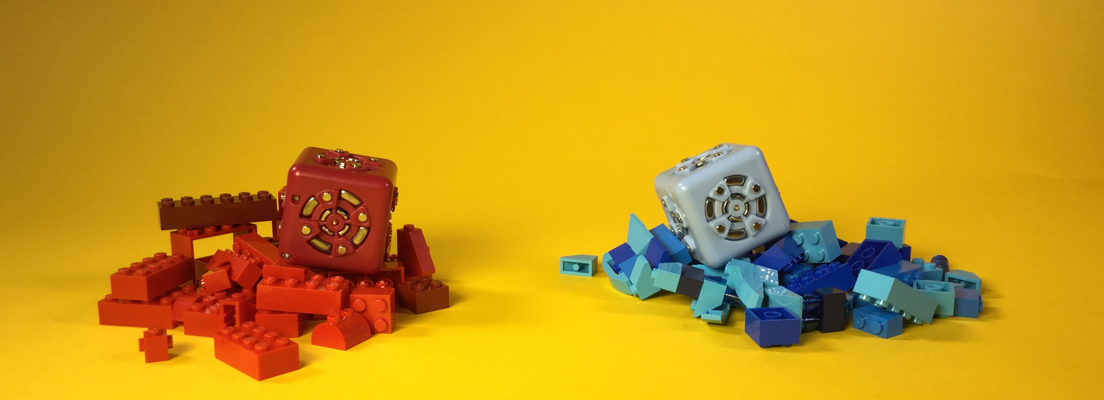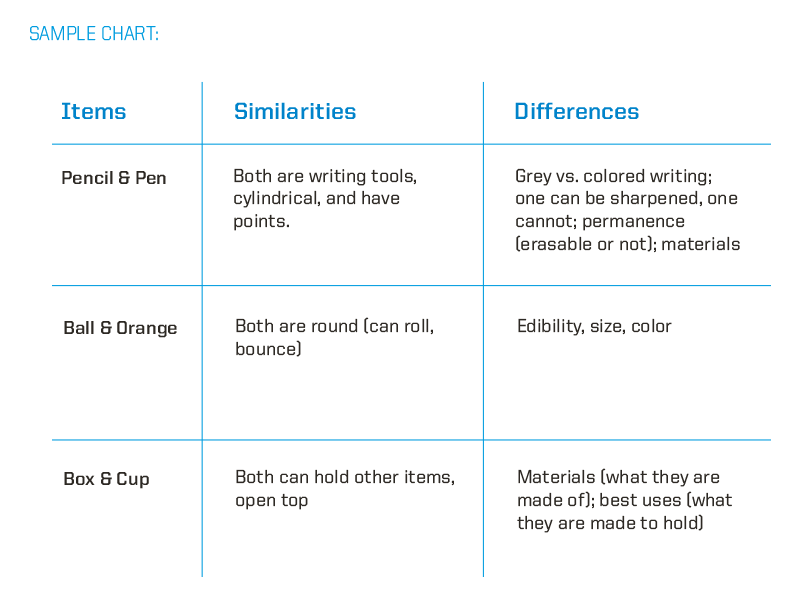A.B.7 | Properties and Categories

Created by: Modular Robotics
Lesson Overview:
This lesson allows students to learn about sorting, classifying and categorizing when discussing how a robot behaves. Sorting, classifying, and categorizing play an important role in science, allowing scientists to communicate using a standardized, or agreed upon, set of objectives or rules. This will be essential in the design and building of robots as there are a multitude of attributes a robot can possess, and there are a number of tasks a robot can perform. By breaking down the functions of robots, students will be better able to plan and problem solve as they design, build and perfect their robots to solve problems.
The Basics:
Ages: 7 – 9 years (grades 1 – 3)Time: 15 – 30 minutes
Prep Time: 5 minutes
Lesson Goal (for the educator): To introduce sorting and classifying by looking at properties of common objects and robots.
Lesson Objectives (for the students): I will be able to sort and classify objects, and robots, by their properties.
Essential Questions: How are things similar and different? What are some of the special qualities, or traits, that objects/robots have? How can we categorize, or group objects/robots together?
21st Century Skills: Creativity and Innovation, Critical Thinking and Problem Solving, Communication and Collaboration
Concepts: Compare/contrast, properties and characteristics, categorization
Vocabulary: Properties, characteristics, similarities, differences, related, categories
Required Cubelets: Distance, 2 Drive, Battery, Brightness, Flashlight, Rotate, Passive, Inverse, Blocker, Knob – enough for each group of 2-5 students
Additional Materials: Student Robot Journals. Objects to classify – use a pen, pencil, ball, orange, box and cup or your own selection of objects.
The Standards:
ISTE: International Society for Technology Education- Creativity and Innovation 1.a, 1.b, 1.c, 1.d
- Communication and Collaboration 2.d
- Critical Thinking, Problem Solving, and Decision Making 4.a, 4.b, 4.c, 4.d
- Technology Operations and Concepts 6.a, 6.b, 6.c, 6.d
NGSS: Next Generation Science Standards
Prior Knowledge Necessary for the Student:
The A.B. track up through A.B.6 | Sensing and Magnitude, or equivalent experience building robots with Cubelets.
Prior Knowledge for the Educator:
Decide whether or not you want to use this lesson to introduce/review Venn diagrams. The first part of this lesson is a demonstration you will carry out and the second part is exploratory. You may choose to skip the first part if you feel your students do not need instruction in properties and characteristics.
Educator Tips:
- Think about using objects that relate to some other topics you are exploring with your class.
- Students may discover that category boundaries are blurry and some are more salient than others.
Preparation:
- Gather objects and outline the chart you will use on the board or elsewhere.
- Divide the class into groups of 2-5 students.
- For each group, place the Cubelets they will need into a container.
Lesson:
Introduction:
-
Time: 1-2 Minutes
- “You now know that robots sense, think, and act. You have had an opportunity to build robots that behave differently depending on the senses or actions you give them.”
- “Now, we are going to examine some objects and learn about what properties they have. Can anyone tell me what a property is?” You may need to explain properties. You can use synonyms to help – characteristic, feature, quality, something that makes it special/unique, attribute, etc.
- “Let’s look at some objects that will help us think about properties and characteristics and learn some new vocabulary.”
Time To Explore:
-
Time: 5-10 minutes
- “I’m going to hold up two objects. We are going to discuss the things they have in common and the things that make them different. It might be true that there are some ways they are the same, and some ways they are different. In either case, you should name what property or characteristic is the same, or what property or characteristic is different. As a first example, let’s talk about this pencil and this pen. What properties are the same? What properties are different?” Allow students to respond.
- Hold up two other objects and ask the students to name, and then compare and contrast their similarities and differences while noticing the properties of the objects.
- As you go through the objects add to a chart for everyone to see:
- “Now let’s take one of the properties we named and think of other objects that have this property. Let’s start with a property that the pen and pencil have – a point. What other objects can you think of that have this property?” Allow students to respond (they might add forks, scissors, keys, etc.).
- Repeat this with some of the other properties.
- “Now let’s see if we can categorize our objects. What different groups, or categories, could we put them in?” Allow students to respond (possible categories could include, but aren’t limited to: writing things, kitchen/meal things, things for carrying other things. “Can things belong to more than one category? Can categories be related?”
- “Now, what if we needed to group by two categories?” Allow students to respond (one example is writing and non-writing items, but there are many possibilities).
- “What if we grouped by four categories?” Allow students to respond.
- “Can things belong to more than one category? Can categories be related?”
- Optional: You may choose to work with a Venn diagram to discuss this further.
- “Remember this, because now when we work with Cubelets we will consider the characteristics of our robots.”

Time: 2-3 Minutes
More Time To Explore:
-
Time: 10-15 Minutes
- “Now, I would like your group to build your own robots, three different ones, and then name the important properties, comparing and contrasting their similarities and differences. Use the worksheet provided (A.M.6.WS) to record your findings.”
- Allow students to carry out this process.
- To facilitate this, walk around the room asking questions:
- What properties and characteristics are the same? Different?
- Are there more similarities or differences?
- Are any of these properties more important than others? How do we decide?
- What properties distinguish these robots from one another?
- What makes a robot unique?
- Allow the students to share some of their discoveries and lead a discussion about what everyone is thinking are the most important properties and why.
- Students might discover that the manner in which a robot moves is important because it is a necessary function in an attempt to carry out human tasks like vacuuming, transporting, etc. They might also discover that sensing is of utmost importance because, without it, a robot couldn’t even begin to work. They may also comment on the speed as an important trait when a robot’s job needs to be done as quickly as possible. There are no right or wrong answers, just facilitate a lively discussion that leaves them pondering!
Time: 2-4 Minutes
Closure/Evaluation
-
Time: 5 Minutes
- Give students time to record their observations and conclusions in their Robotics Journal. Encourage them to use words and other methods of recording such as charts, sketches, flow charts, etc.
- Allow time for students to put materials away and plug in the Battery Cubelets for recharging.
Time: 2 Minutes
End Results:
Students will begin to develop an understanding of properties, their importance, and how we might characterize and group them.
Optional Quick Write For Prompt and/or Evaluation:
What did you learn today about properties and categorizing?
What To Go To Next:
For More Review:This work is licensed under a Creative Commons Attribution-ShareAlike 4.0 International License.


